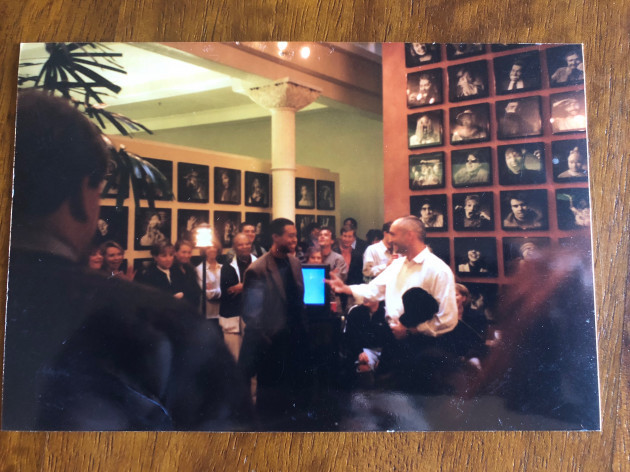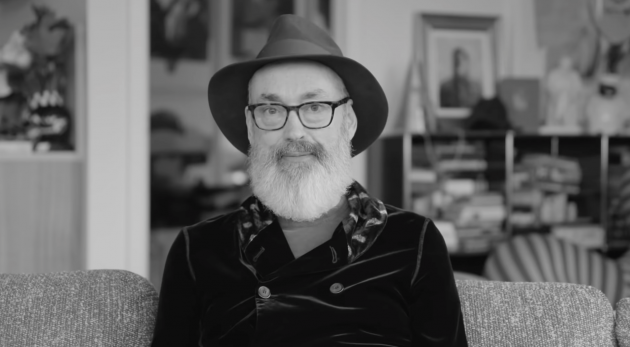TWENTY-SEVEN YEARS and $500 million later, Tiger Woods has split from Nike.
It is the end of a storied partnership: there is no sports attire as famous as Woods’ Sunday red, when his shirt blazed as fiercely as his eyes.
Woods made one of Nike’s greatest TV ads for them with the astounding precision of his chip at the 2005 Masters, when the ball’s swoosh stopped to wink at the viewer before it plopped improbably into the hole.
Jim Riswold made the rest of them. A graduate of the University of Washington, he took a job in 1984 with Oregon-based advertising agency Wieden+Kennedy, where he worked on the Nike account and made a uniquely American art form out of sports commercials on television. He dreamed up the ‘Bo Knows’ campaign with Bo Jackson in 1989 and created Michael Jordan’s ads with Spike Lee and Bugs Bunny, the latter spawning the movie Space Jam.
So when Nike struck a $40 million deal in 1996 with an amateur golf prodigy named Tiger Woods, Riswold got the daunting job of writing the first TV commercial. He had to assemble it from archive footage, as nothing new would be filmed while Woods focused on being the first man in history to win three-straight US amateur titles. Bobby Jones, co-founder of the Masters, won the competition five times in total but never more than twice in a row.
Woods won the title at Pumpkin Ridge and at the end of the day, he stepped into a room with his parents along with his agent Hughes Norton and coach his Butch Harmon. They were joined by Riswold – whom Woods had never met – and Nike CEO Phil Knight, who arranged the meeting having told Woods he had to show him something important. A nervous Riswold pushed a VHS tape into its player and showed Woods his work: a 57-second ad consisting of footage from his US amateur win, onto which lines of text were interpolated, one of which recurred.
Hello world.
“The spot ends and the room is silent,” Riswold tells The 42. “Earl speaks first by pounding his fist on the table and says, ‘Amen.’ I ask Tiger if he has anything to say. He says, ‘Can I see it again please?’ High fives all around, hugs too. Butch says that was the best golf commercial he’s ever seen.”
Thus began the 27-year tale of Tiger and Nike. Woods allowed Riswold drink champagne from his trophy, but stopped short of agreeing to Riswold’s exuberant request for free golf lessons. He would get them anyway, during the downtime that came with filming TV commercials. Riswold and Woods had putting and chipping contests – Riswold describes them – “like going up against Ted Bundy in a serial killing contest” – and Woods’ winning payment came from McDonalds. “It’s not everybody who gets golf lessons from Tiger Woods in exchange for a few Big Macs,” says Riswold.
Woods loved the Hello world ad but the world didn’t. The ad claimed there were still courses in the US Woods was forbidden from playing because of the colour of his skin. Responding to the Washington Post, Nike subsequently admitted that no course existed, while it jarred with Woods’ complete disinterest in all matters relating to race. A couple of years earlier, Woods told a journalist the only time he thinks about race is when the media ask a question about it.
“I’ve questioned myself if it was the right thing to do, to play the Race Card,” says Riswold. “But every time I do, I answer, ‘Hell, yes, it was the right thing to do.’ I’m proud of that ad. When we played the rough cut at Pumpkin Ridge and we were celebrating, Earl said, ‘Bobby Jones is rolling over in his grave.’ You can’t beat that.”
Nike helped propel Woods to a level of unprecedented fame for a golfer, and he chafed at this scrutiny. Why else would someone name their yacht Privacy?
“I think the world wanted and took too much of his time,” says Riswold. “I saw less of him when he closed his circle tight. Who wouldn’t?”
Woods visited Riswold’s office before he closed that circle, after winning the 1997 Masters. Wieden+Kennedy mimicked the ceremony at Augusta National with one of their own jackets. Riswold played the Nick Faldo role, and Woods signed a portrait drawn by Riswold’s then-five-year-old daughter. It’s now framed on her apartment wall.
It’s useful that Woods picked 2005 to create Nike’s ad, because it was the year Riswold quit the business altogether. He was diagnosed with leukemia in 2000 and, at the age of 42, given between two and four years to live. He met Woods shortly after his diagnosis, and joked that leukemia is even tougher than golf. “I think he even let me win our putting contest that time” says Riswold. “Tiger Woods, Softie!”
Riswold cheated his death sentence with help from an experimental drug called Gleevec and a helping hand from, er, Adolf Hitler.
“How Hitler Saved my Life,” ran the headline on Riswold’s article for Esquire on 2005, explaining how the fuhrer exploited his weakness for art, specifically the work of Andy Warhol. During his convalescence, Riswold bought dolls of historical dictators – your Hitlers, your Mussolinis, your Stalins – and photographed them in absurd dress and contexts. He snapped a toy Mussolini on a toy tricycle; he photographed a dress-wearing Hitler in a dollhouse. An Oregon gallery then asked to exhibit them for sale - Riswold calls this the day Hitler invaded Portland – and he was subsequently commissioned to do another collection incorporating Napoleon. Suddenly Riswold was a full-time artist with another reason to live.
“The redemptive power of selling art!”, he wrote in Esquire. “But please don’t get me wrong; it’s still a fucking hassle not to die. But at least now it’s a worthwhile fucking hassle.”
An art professor said Riswold’s art “teaches us how to deal with monsters, be it a dictator or a deadly disease”, while he describes his own work as therapy, albeit “not what you would call FDA-approved.”
“I love making art,” he says. “I’ve gone from a career of selling people things they don’t need to making things they don’t want. Both paths start with the letter a and involve lots of wasted money. This is going to get me in trouble with the art people who see art as this pristine thing in which the artist slaves away in a garret subsisting on paint and his own urine in order to create his masterpiece. Hate to tell you, that’s marketing too. I like art that disturbs the comfortable and comforts the disturbed.
“I was recently diagnosed terminal with bone cancer. I’ve been cheating death since 2000. I’m not afraid to die – and I’m in no hurry either – but I’ve found a sense of total wonder and wander. Life is good. I recommend it for everyone.”
Woods has a favourite commercial from his time with Nike and it was, of course, created by Riswold. It aired in 1997, and featured a series of American kids from minority backgrounds playing golf and telling the camera, “I am Tiger Woods.”
In 2013, Riswold was inducted into the Hall of Fame at the One Club for Creativity in New York, a year after Steve Jobs. The organisation compiled a video to celebrate Riswold: it riffed on that 1997 ad and featured a few familiar faces.
It opened with Tiger Woods looking down the lens, saying, “I am Jim Riswold.”



